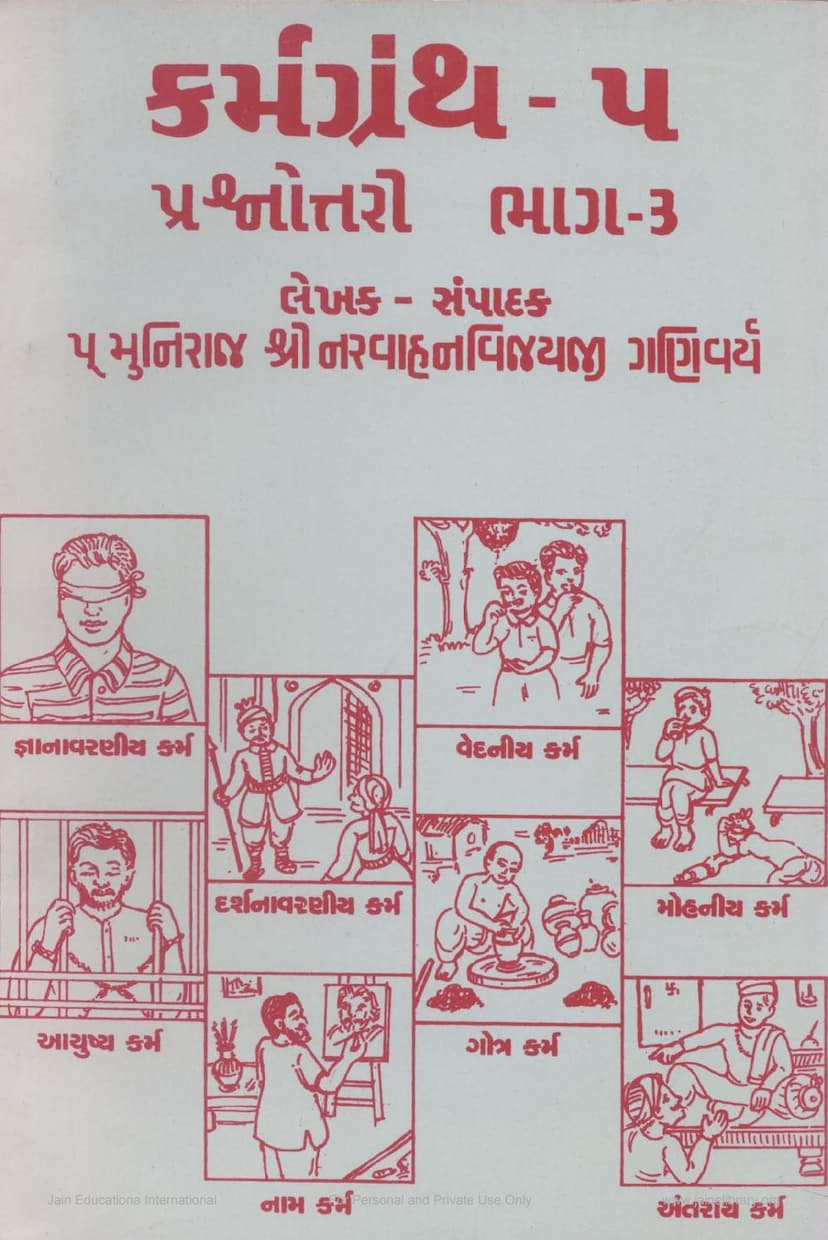Karmgranth 05 By 03 Prashnottari
Added to library: September 2, 2025

Summary
This document is a Gujarati question-and-answer book titled "Karmgranth-5, Prashnottari Bhag-3" (Karmgranth-5, Question-Answer Part-3), authored by Muni Shri Narvahanvijayji Ganivarya and published by Padarth Prakashan Trust. It is part of a series of Prashnottari Granthmala publications.
The book systematically explains the concepts of Jain Karma theory through a question-and-answer format. It delves into the various types of karma, their durations (utkrushta - highest and jaghanya - lowest), and their "abadhakal" (period during which karma does not manifest its effect).
Key aspects covered include:
- Types of Karma: It details the eight fundamental types of karma (Jnāvaraniya, Darshanāvaraniya, Vedaniya, Mohaniya, Āyuṣya, Nām, Gotra, and Antarāya Karma) and their sub-types.
- Duration of Karma (Sthitibandha): The book provides extensive information on the maximum (utkrushta) and minimum (jaghanya) durations for each karma prakriti (type). These durations are measured in terms of sagaropama (a very long unit of time) and koti-sagaropama (many koti times sagaropama). It also elaborates on the durations in relation to different life forms and stages of spiritual development (gunasthanas).
- Abadhakal (Period of Non-Manifestation): It explains the period during which a karma, once bound, does not mature and yield its results. The book provides the utkrushta and jaghanya abadhakal for various karma prakritis.
- Nishek Rachana (Formation of Karmic Units): It touches upon how karmic units are arranged over time.
- Doers of Karma (Bandhakaran): A significant portion of the book details which types of souls, in which spiritual stages (gunasthanas), and under what types of mental states (adhyavasaaya - states of consciousness) bind specific karmas with their utkrushta (highest) and jaghanya (lowest) durations. It differentiates between souls in different life forms (ekendriya to panchendriya, devas, naraki) and their capacity to bind specific karmas.
- Types of Bandha (Bondage): It explains the classifications of karma bondage: sādi (with a beginning), anādi (without a beginning), dhruva (constant), and adhruva (inconstant), and how these apply to different karma prakritis.
- Yoga and Its Role: The latter part of the book discusses the concept of Yoga (activity of mind, speech, and body) and its relation to karma bondage, explaining how different types of souls and their yogic states influence the duration of karma. It breaks down Yoga into different types and explains the concept of 'ardhapudgalaparavarta' and other temporal measures.
- Specific Examples: The book provides detailed lists and numerical values for the durations and abadhakals for numerous karma prakritis, often differentiating the bondage based on the life form and the specific spiritual stage.
In essence, the book serves as a comprehensive guide to understanding the intricate details of karma bondage and its temporal aspects within Jain philosophy, presented in an accessible question-and-answer format.